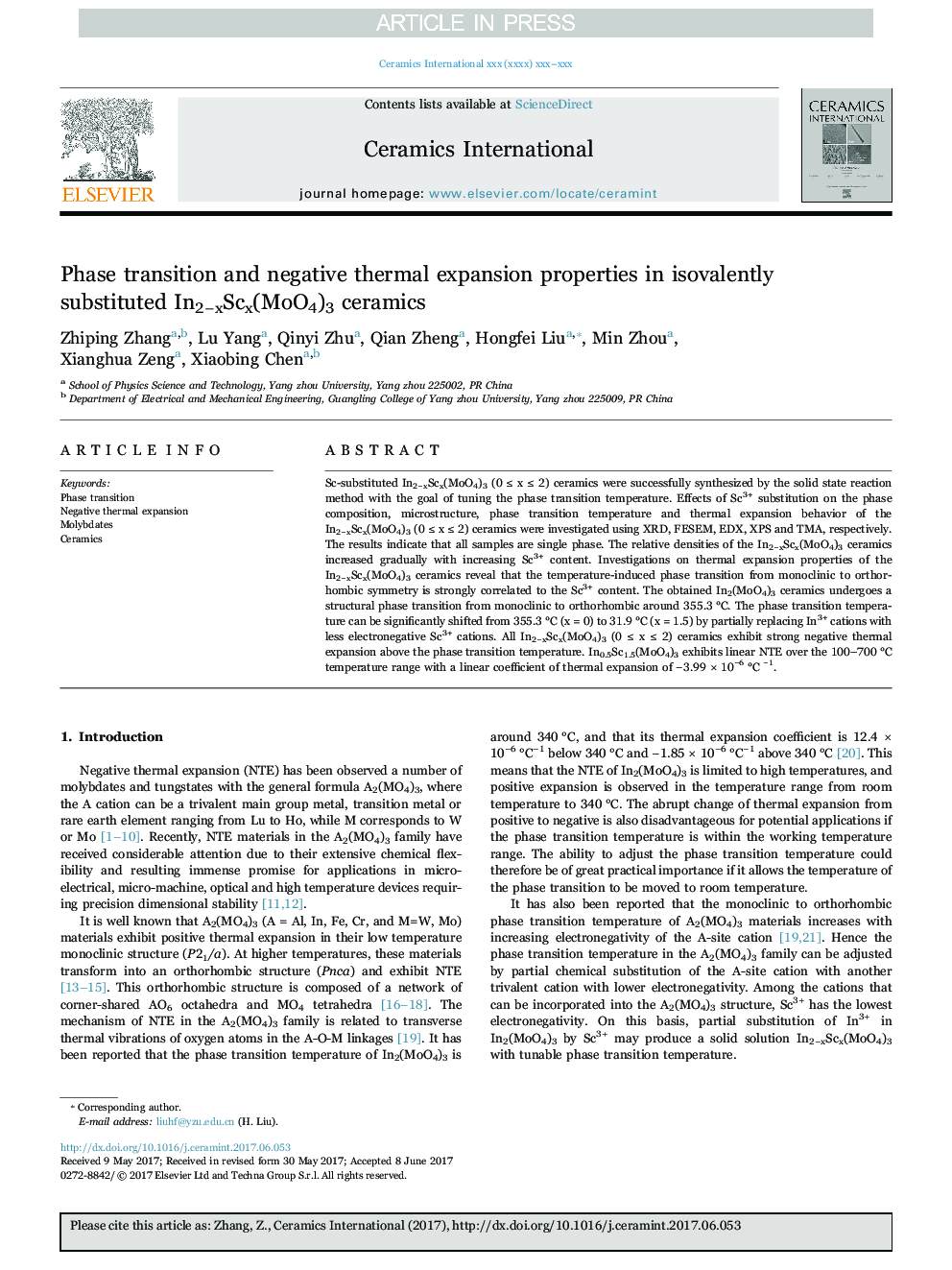| Article ID | Journal | Published Year | Pages | File Type |
|---|---|---|---|---|
| 5437493 | Ceramics International | 2017 | 5 Pages |
Abstract
Sc-substituted In2âxScx(MoO4)3 (0 ⤠x ⤠2) ceramics were successfully synthesized by the solid state reaction method with the goal of tuning the phase transition temperature. Effects of Sc3+ substitution on the phase composition, microstructure, phase transition temperature and thermal expansion behavior of the In2âxScx(MoO4)3 (0 ⤠x ⤠2) ceramics were investigated using XRD, FESEM, EDX, XPS and TMA, respectively. The results indicate that all samples are single phase. The relative densities of the In2âxScx(MoO4)3 ceramics increased gradually with increasing Sc3+ content. Investigations on thermal expansion properties of the In2âxScx(MoO4)3 ceramics reveal that the temperature-induced phase transition from monoclinic to orthorhombic symmetry is strongly correlated to the Sc3+ content. The obtained In2(MoO4)3 ceramics undergoes a structural phase transition from monoclinic to orthorhombic around 355.3 °C. The phase transition temperature can be significantly shifted from 355.3 °C (x = 0) to 31.9 °C (x = 1.5) by partially replacing In3+ cations with less electronegative Sc3+ cations. All In2âxScx(MoO4)3 (0 ⤠x ⤠2) ceramics exhibit strong negative thermal expansion above the phase transition temperature. In0.5Sc1.5(MoO4)3 exhibits linear NTE over the 100-700 °C temperature range with a linear coefficient of thermal expansion of â3.99 à 10â6 °C â1.
Related Topics
Physical Sciences and Engineering
Materials Science
Ceramics and Composites
Authors
Zhiping Zhang, Lu Yang, Qinyi Zhu, Qian Zheng, Hongfei Liu, Min Zhou, Xianghua Zeng, Xiaobing Chen,
